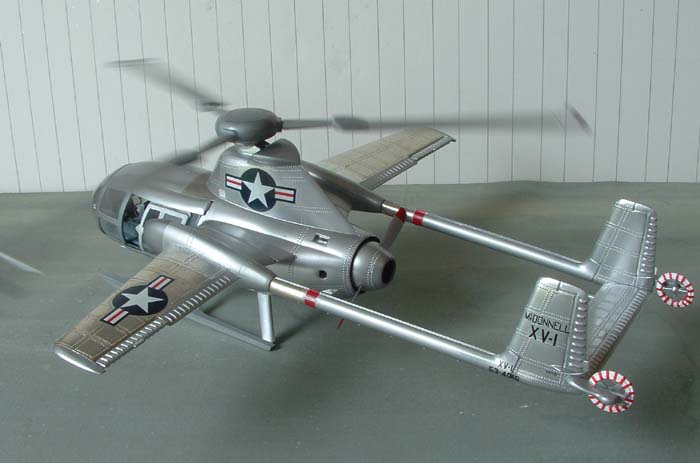
McDonnell XV-1
By: Ismael Gonzalez
Background history:
In 1951, the U.S. Army and the Air Force announced a requirement for development of a convertiplane: A fixed-wing aircraft that could also take off and land vertically as a helicopter. McDonnell responded the competition with the XV-1 mock-up. This experimental aircraft was designed by a pioneer of vertical flight, the Austrian Friedrich von Doblhoff. It was built with the collaboration of the U.S. Army and Air Force. It was one of the first examples of a compound helicopter. The XV-1 was powered by a single 550hp Continental R-975 piston engine that was housed in the rear of the fuselage. It drove two air compressors to power the 3-blades main rotor with tip-jet for vertical lift, and powered the fixed pitch two-bladed propeller at the fuselage rear for forward flight. The aircraft had a small wing supporting twin tail booms. The cabin seated a pilot and three passengers. The first of two prototypes had its first free flight on July 14, 1954. It had its first conversion from vertical to horizontal flight on April 29, 1955. In October 1956 it became the first rotorcraft to reach a speed of 200MPH (320km/h). Development was suspended in 1957.
The model:
The XV-1 is a barely
known obscure aircraft. Even reference about it is hard to come by.
Yet I think it is an important chapter in aircraft development history.
This model was released by Glencoe in 1988 but it is actually a repop of
the ITC model first released back in the late 50's. For been a 50 years old
mold, the fit of the parts is very good. The clear parts are quite thick,
which is not that uncommon for the era.
The box indicates it is 1/32 scale, but the instructions say
1/30. I did my own measurements and compared to the specs and it came out
as 1/32.
I built it pretty much out of the box, except for the added cyclic
stick, seat cushions and seatbelts. Many different shades of metallic
paints were used, aluminum been the predominant color, as well as 2 types of BMF
on some parts of the wings.










created: 9/26/2007